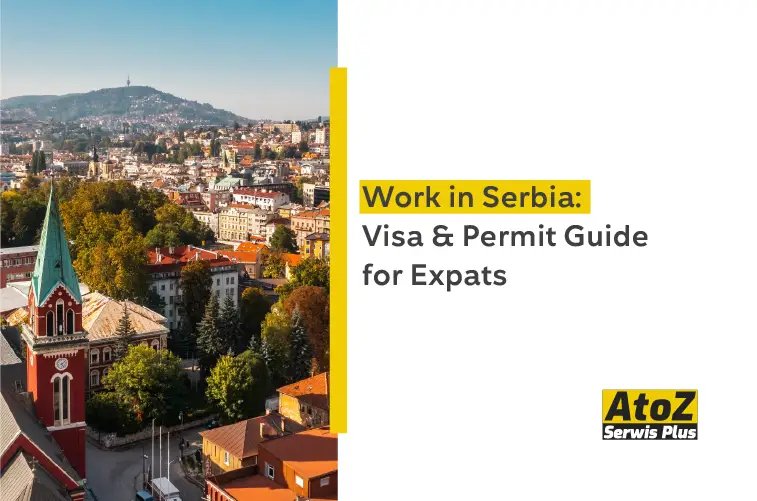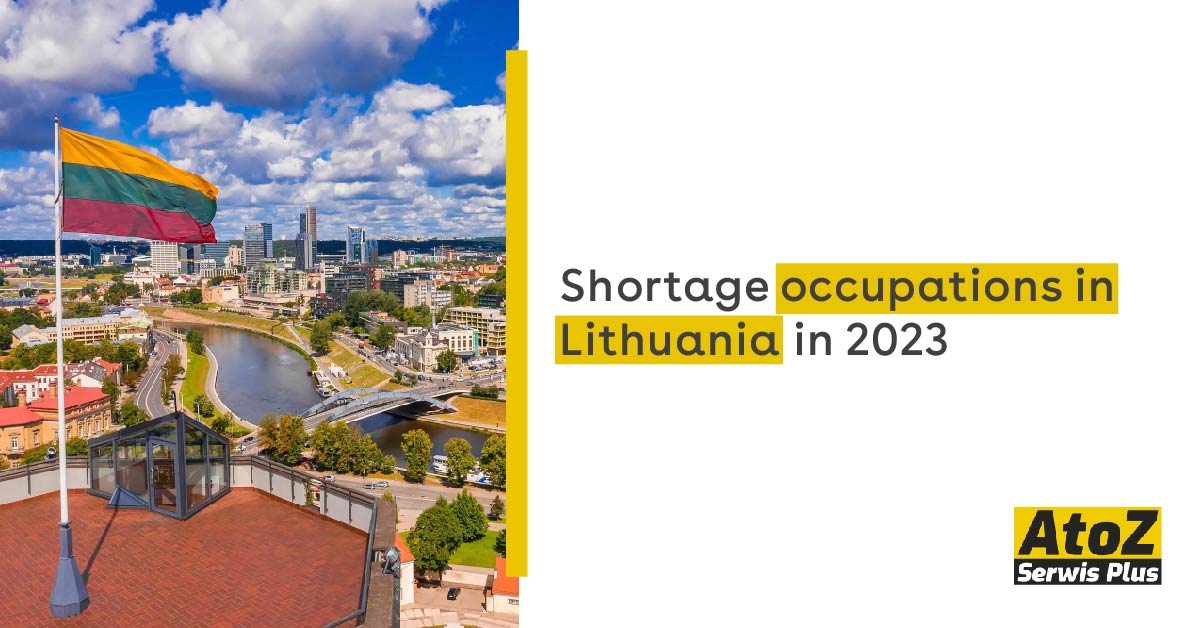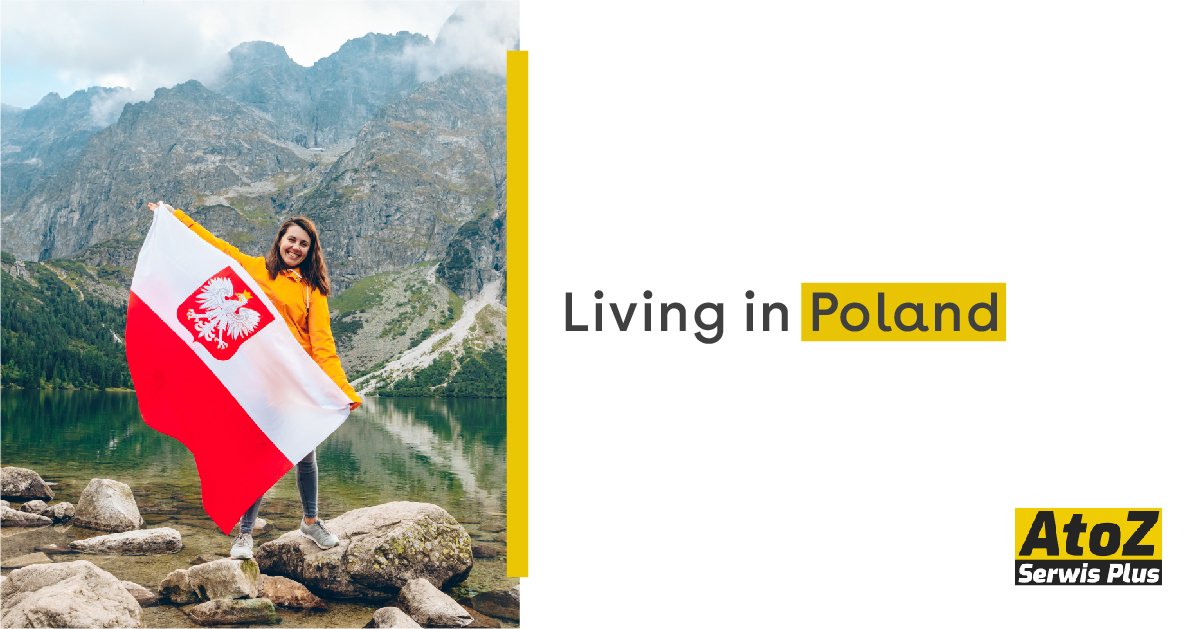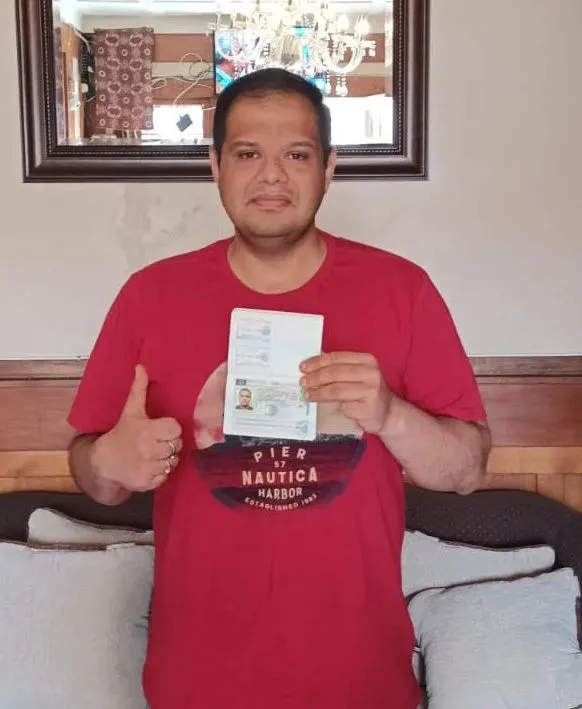

Work in Serbia: Visa and Permit Guide for Expats
How to Find a Job in Serbia: A Full Guide Using the Government Portal
Serbia is an emerging European job market that attracts local and international job seekers. Whether you are a Serbian citizen or a foreigner looking to work in Serbia, the government provides an official job search platform through the National Employment Service (NES). This guide will walk you through the entire process of finding a job in Serbia using the government portal and other official resources.
1. Understanding the Serbian Job Market
Before starting your job search, it is essential to understand the Serbian job market. Key industries with demand for workers include:
- IT and Software Development
- Engineering and Manufacturing
- Healthcare and Medical Services
- Tourism and Hospitality
- Agriculture and Food Processing
- Customer Service and BPO (Business Process Outsourcing)
2. Accessing the Official Serbian Government Job Portal
The Serbian government provides an official job search platform through the National Employment Service (NES). Follow these steps to use the platform effectively:
Step 1: Visit the National Employment Service (NES) Website
- Go to the official NES website: www.nsz.gov.rs
- The portal is available in Serbian, so use a browser translation tool if needed.
Step 2: Browse Job Listings
- Click "Job Offers" (Ponude za posao) in the main menu.
- Use the search filters to refine results based on job category, location, and required skills.
Step 3: Create an NES Account (Optional but Recommended)
- Register as a job seeker to apply for jobs directly.
- Submit personal details, work experience, and educational qualifications.
Step 4: Apply for Jobs
- Read the job descriptions carefully and check the application requirements.
- Upload your resume and supporting documents as needed.
- Follow the employer’s preferred method of application (online, email, or direct contact).
3. Additional Government Resources for Job Seekers
Aside from the NES job portal, Serbia has additional government-backed services for job seekers:
Employment Office Assistance
- The Serbian Employment Service has local offices nationwide that provide career counselling, job-matching services, and employment training programs.
- Find a nearby office at: www.nsz.gov.rs/lokalne-filial
Serbian Work Permit for Foreigners
If you are a foreign national, you may need a work permit before applying for jobs. The process includes:
- Securing a job offer from a Serbian employer.
- Employer applies for a work permit at the Serbian Ministry of Labor.
- Obtaining a residence permit for a long-term stay.
- Completing additional legal requirements based on your nationality.
For details, visit the official immigration portal: www.srbija.gov.rs/workinserbia
4. Alternative Ways to Find a Job in Serbia
Besides the government job portal, you can also explore other job search methods:
Online Job Boards
- Infostud – One of the largest job portals in Serbia.
- Poslovi.rs – Another popular Serbian job search site.
- LinkedIn – Connect with Serbian employers and apply for international jobs.
Networking and Social Media
- Join professional groups on LinkedIn and Facebook related to jobs in Serbia.
- Attend industry-specific career fairs and professional events.
Recruitment Agencies
- Many Serbian and international recruitment agencies assist with job placements.
- Some well-known agencies include Adecco Serbia and Manpower Serbia.
5. Tips for a Successful Job Search in Serbia
- Tailor Your Resume: Customize your CV using Serbian job market standards.
- Learn Basic Serbian: While many jobs require English, knowing Serbian can increase your chances of employment.
- Apply Early: Government job postings may have strict deadlines.
- Follow Up: Contact employers after submitting your application to show interest.
- Prepare for Interviews: Be ready to answer questions about your experience, skills, and motivation to work in Serbia.
Conclusion
Finding a job in Serbia is easier when you use the National Employment Service (NES) portal and other job search methods. Whether you are a local or a foreigner, Serbia offers various employment opportunities in growing industries. Following the steps in this guide, you can successfully navigate the Serbian job market and secure a position that suits your skills and experience.
Useful Links
- National Employment Service (NES) Portal: www.nsz.gov.rs
- Serbia Work Permit Information: www.srbija.gov.rs/workinserbia
You can find your next job in Serbia using the right resources and strategies and build a successful career!
How to Get a Serbia Work Permit
Introduction
Serbia is becoming a top destination for foreign workers due to its booming economy, affordable living costs, and demand for skilled professionals. Whether you’re seeking opportunities in IT, healthcare, construction, or other sectors, obtaining a Serbia work permit in 2025 is crucial. This comprehensive guide explains the eligibility requirements, application process, and government regulations to help you secure legal employment in Serbia.
For official government guidelines, visit:
- Serbian Ministry of Labor, Employment, Veteran and Social Affairs: http://www.minrzs.gov.rs
- National Employment Service (NES): http://www.nsz.gov.rs
- Serbian Ministry of Foreign Affairs (Visa Information): http://www.mfa.gov.rs
Types of Work Permits in Serbia
Serbia provides different work permits depending on employment status and job type. The key categories include:
- Personal Work Permit – Granted to individuals with permanent residency or refugee status.
- Employment Work Permit – Issued at an employer’s request for foreign professionals.
- Special Work Permit – Designed for project-based employment, intra-company transfers, or specialised jobs.
How to Apply for a Serbia Work Permit
Step 1: Secure a Job Offer from a Serbian Employer
- You must first receive a confirmed job offer from a registered Serbian company.
- The employer must prove that no Serbian or EU citizen can fill the position.
Step 2: Employer Applies for a Work Permit
- The Serbian employer submits the work permit application to the National Employment Service (NES).
- Required documents:
- Copy of the employment contract or official job offer
- Employer’s company registration details
- Justification letter explaining the need for hiring a foreign worker
For more details: http://www.nsz.gov.rs
Step 3: Obtain a Temporary Residence Permit
- Before applying for a work permit, foreign nationals must secure a Temporary Residence Permit.
- Application is submitted at a Serbian consulate or after arriving in Serbia.
- Documents needed:
- Valid passport (minimum six months validity)
- Proof of accommodation in Serbia
- Health insurance policy
- Bank statements or financial proof of stable income
For official details: http://www.mfa.gov.rs
Step 4: Submit the Work Permit Application
- Once your residence permit is approved, the employer completes the work permit application.
- Additional documents required:
- Copy of your passport
- Approved temporary residence permit
- Certified academic or professional qualifications (diplomas, certificates, etc.)
Step 5: Receive Your Work Permit
- The National Employment Service (NES) reviews the application within 10 to 30 days.
- Once approved, the work permit is valid for up to one year and can be renewed.
Work Permit Processing Time and Fees
- Processing Time: 10 to 30 days
- Work Permit Fee: €100 to €200 (depending on the type of permit)
- Temporary Residence Permit Fee: Approximately €120
Serbia Work Permit Validity and Renewal
- Work permits are usually valid for one year.
- Renewals depend on continued employment with the same employer.
- If you change jobs, you must apply for a new work permit.
Key Points to Remember
- Work permits in Serbia are employer-specific – switching jobs requires a new application.
- A temporary residence permit is mandatory before applying for a work permit.
- Some nationalities may qualify for easier processing due to bilateral agreements.
- Employers must prove that a Serbian or EU citizen cannot fill the position.
Conclusion
To get a Serbian work permit in 2025, you must follow a structured application process, including securing a job offer, obtaining a residence permit, and having your employer submit the request. Please start early and make sure all documents are complete to avoid delays.
For the latest government updates and legal guidelines, check:
- Serbian Ministry of Labor: http://www.minrzs.gov.rs
- National Employment Service: http://www.nsz.gov.rs
- Ministry of Foreign Affairs: http://www.mfa.gov.rs
With proper preparation, you can successfully work in Serbia in 2025 and enjoy career opportunities in this growing market!
Blue-Collar and White-Collar Job Shortages in Serbia: A 2025 Outlook
Introduction
Serbia is experiencing a growing shortage of blue-collar and white-collar workers, affecting key industries and economic growth. The Serbian government and employers are actively seeking solutions to address these gaps. This blog explores which jobs are in demand, the reasons behind the shortages, salary trends, and visa options for foreign workers.
Blue-Collar Job Shortages in Serbia
A shortage of skilled and semi-skilled blue-collar workers heavily impacts Serbia’s labour market. The key industries facing shortages include:
1. Construction Sector
- High demand for bricklayers, electricians, welders, carpenters, and heavy machine operators.
- Reason for shortage: Many workers have migrated to Western Europe for better salaries.
- Average Salary: €600–€1,200 per month.
2. Manufacturing & Industrial Jobs
- Serbia’s industrial sector requires machinists, CNC operators, and assembly line workers.
- Reason for shortage: Lack of vocational training and an ageing workforce.
- Average Salary: €500–€1,000 per month.
3. Transport & Logistics
- Shortages in truck drivers, warehouse workers, and forklift operators.
- Reason for shortage: Many Serbian drivers relocate to the EU for higher wages.
- Average Salary: €700–€1,500 per month.
4. Hospitality & Tourism
- High demand for chefs, servers, hotel staff, and cleaners.
- Reason for shortage: Seasonal work and preference for employment in the EU.
- Average Salary: €500–€900 per month.
White-Collar Job Shortages in Serbia
While blue-collar jobs dominate the shortage discussion, specific white-collar sectors face hiring difficulties due to skill gaps and emigration.
1. Information Technology (IT) & Software Development
- High demand for software engineers, cybersecurity experts, and data analysts.
- Reason for shortage: Serbia’s IT sector is growing, but there aren’t enough qualified professionals.
- Average Salary: €1,500–€3,500 per month.
2. Healthcare & Medical Professionals
- Shortages in doctors, nurses, and medical technicians.
- Reason for shortage: Many Serbian healthcare professionals leave for EU countries.
- Average Salary: €700–€2,500 per month.
3. Finance & Banking
- Demand for accountants, auditors, and financial analysts.
- Reason for shortage: Serbia’s financial sector is growing, but specialised professionals are lacking.
- Average Salary: €1,000–€2,500 per month.
4. Education Sector
- High demand for foreign language teachers, STEM educators, and vocational trainers.
- Reason for shortage: Many professionals prefer private sector opportunities.
- Average Salary: €700–€1,500 per month.
Reasons Behind Labor Shortages in Serbia
- Brain Drain: Skilled workers leave for better salaries in Germany, Austria, and other EU countries.
- Aging Workforce: Serbia’s working-age population is shrinking due to low birth rates and emigration.
- Skill Mismatch: Education and vocational training do not meet labour market needs.
- Low Wages: Salary levels remain uncompetitive compared to Western Europe.
- Strict Work Permit Rules: Foreign workers face administrative challenges when applying for Serbian work visas.
Government Efforts to Address the Shortage
The Serbian government is taking steps to reduce labour shortages:
- Investment in vocational education and training (VET) programs.
- Simplifying work permit and visa regulations for foreign workers.
- Incentivizing Serbian diaspora workers to return home.
- Collaboration with EU and Balkan countries through the Open Balkan Initiative.
Official Government Resources:
- Serbia's Ministry of Labor, Employment, and Social Policy: https://www.minrzs.gov.rs
- Statistical Office of the Republic of Serbia: https://www.stat.gov.rs
- National Employment Service of Serbia: https://www.nsz.gov.rs
Work Permit & Visa Process for Foreign Workers
Due to labour shortages, Serbia is opening opportunities for foreign workers. Here’s how non-Serbians can apply for work in Serbia:
1. Types of Work Permits in Serbia
- General Work Permit: For highly skilled professionals (IT, healthcare, engineering).
- Seasonal Work Permit: For agriculture and tourism sector workers.
- Intra-Company Transfer Permit: This is for employees transferred from multinational companies.
2. How to Apply for a Serbian Work Visa
- Step 1: Secure a job offer from a Serbian employer.
- Step 2: Employer submits a work permit request to the National Employment Service (NES).
- Step 3: Apply for a Type D Visa at the nearest Serbian consulate.
- Step 4: Upon arrival, register with the police and obtain a temporary residence permit.
3. Processing Time & Costs
- Processing Time: 30-45 days.
- Visa Fee: €100-€200.
For more details, visit the Serbian Ministry of Foreign Affairs
Conclusion
Serbia’s labour shortages in blue-collar and white-collar sectors highlight the urgent need for workforce development and migration reforms. Foreign workers may find opportunities as the government relaxes work permit rules to attract skilled professionals. Check official job portals and employer websites if you’re looking for employment in Serbia.
For more information on work permits and labour market trends, visit the official Serbian government websites mentioned above.
How to Get a Serbia Work Visa: Step-by-Step Guide
Serbia is an attractive destination for foreign workers seeking job opportunities in Europe. To work legally in Serbia, you must obtain a Serbia work visa and a work permit. Below is a detailed step-by-step guide to help you navigate the work visa process, including government links for official information.
Step 1: Secure a Job Offer in Serbia
Before applying for a work visa, you must have a confirmed job offer from a Serbian employer. The employer is crucial in initiating your work permit application.
Step 2: Employer Applies for a Work Permit
Your employer must submit a work permit application to the National Employment Service of Serbia (NES). The application process includes:
- Submission of required documents by the employer.
- Confirmation that no Serbian or EU citizens are available for the job.
- Processing time of 2–4 weeks.
Government Link: National Employment Service of Serbia
Step 3: Obtain a Temporary Residence Permit
Once your work permit is approved, you must apply for a Temporary Residence Permit at the Serbian embassy or consulate in your home country. The procedure involves:
- Completing the Temporary Residence Permit Application form.
- Submitting a valid passport with at least six months of validity.
- Providing a work permit issued by NES.
- Proof of accommodation in Serbia (rental agreement or employer-provided housing confirmation).
- Health insurance valid for the duration of stay.
- Proof of financial means (bank statements or employer guarantee).
- A clean criminal record certificate from your home country.
The processing time for a Temporary Residence Permit is 30 to 60 days.
Government Link: Ministry of Foreign Affairs of Serbia
Step 4: Apply for a Serbia Work Visa
After obtaining the Temporary Residence Permit, you must apply for a work visa at your home country's nearest Serbian embassy or consulate. The steps are:
- Complete the work visa application form.
- Attach a valid passport (with at least six months' validity).
- Provide recent passport-sized photographs.
- Submit the work contract signed by your employer.
- Include the approved work permit issued by NES.
- Pay the visa processing fee.
- Attend an interview (if required by the Serbian embassy/consulate).
The visa processing time ranges between 30 to 60 days.
Government Link: Serbian Embassy and Consulate Locations
Step 5: Apply for a Serbian Work Visa via the eVisa Portal
The Serbian eVisa portal offers a convenient way to apply for a work visa before travelling to Serbia. Here’s how you can apply step-by-step:
1. Access the Serbian eVisa Portal
- Visit the official Serbian eVisa platform: eVisa Serbia.
- The portal allows you to submit your visa application online before travel.
2. Create an Account
- Register on the portal by providing a valid email address and setting up a password.
- Verify your account through the confirmation email sent to you.
3. Fill Out the Online Visa Application Form
- Select the appropriate visa type (Work Visa – Type D).
- Provide all necessary personal and travel information, including:
- Full name, date of birth, nationality, and passport details.
- Purpose of your visit (“Employment”).
- Planned duration of your stay.
- Contact details of your employer or accommodation in Serbia.
4. Upload Required Documents
- Prepare the following documents in scanned format and upload them as per the portal’s instructions:
- Valid Passport: Must have at least 6 months of validity remaining.
- Work Permit: Provided by your Serbian employer.
- Employment Contract: Signed by both you and the employer.
- Proof of Accommodation: Rental agreement, invitation letter, or hotel booking.
- Health Insurance: Covering your stay in Serbia.
- Passport-sized photograph: As per Serbian visa photo requirements.
- Proof of Financial Means: Bank statements or employer’s guarantee.
- Ensure that uploaded documents meet the size and format requirements specified by the portal.
5. Pay the Visa Fee
- Complete the payment of the visa fee through the portal’s secure payment gateway.
- Keep the receipt or payment confirmation as proof of payment.
6. Submit Your Application
- Review your application carefully to ensure all information is correct.
- Submit your application and note the reference number for tracking purposes.
7. Wait for Processing
- The processing time for Serbian work visa applications is typically 35–60 days or more.
- If additional documents or information are needed, you will be contacted via email.
8. Attend an Appointment (if required)
- In some cases, you may be required to attend an appointment at the nearest Serbian embassy or consulate.
- During the appointment, you may need to:
- Submit biometric data.
- Attend an interview.
9. Receive Your Visa
- If your application is approved, you will receive your visa electronically or be asked to collect it from the Serbian embassy/consulate.
- Once the application is approved, you must visit the embassy for visa stamping to finalise the process.
10. Travel to Serbia
- Once you receive your visa, you can travel to Serbia. Ensure you carry:
- Your passport with the visa.
- Supporting documents such as your work permit, employment contract, and health insurance.
11. Register Your Address in Serbia
- Register your address at the nearest police station within 24 hours of arrival. This is mandatory for all foreign residents of Serbia.
Government Link: Serbian eVisa Portal
Final Thoughts
Obtaining a Serbia work visa involves multiple steps, from securing a job offer to registering with local authorities. Ensure that your employer follows the correct procedure and provides all necessary documents for a work permit. Use the official Serbian government websites for accurate and up-to-date visa requirements.
Start your Serbia work visa application today by referring to the official government links provided!
How to Appeal Serbia Visa Refusal – A Step-by-Step Guide
Introduction
Receiving a visa refusal for Serbia can be frustrating, especially if you are looking forward to working, studying, or travelling. However, you still have the right to appeal if your Serbia visa application has been rejected. This guide will take you through the step-by-step process of appealing a Serbia visa refusal, ensuring you can overturn the decision.
Understanding the Serbia Visa Refusal
Before you file an appeal, it's essential to understand why you're having a visa refusal. The Serbian authorities provide a written explanation, usually mentioning:
- Insufficient documentation
- Financial instability
- Lack of proof of accommodation or travel plans
- Failure to meet eligibility requirements
- Suspicions about the purpose of the visit
Once you identify the issue, you can proceed with your appeal.
Step-by-Step Guide to Appeal Serbia Visa Refusal
1. Read the Refusal Letter Carefully
The visa refusal letter from the Serbian consulate contains specific reasons why your application was denied. Carefully review these reasons to determine the weak points in your application.
2. Understand Your Right to Appeal
If your Serbian visa is refused, you have the legal right to appeal within 8 days of receiving the refusal decision. You must submit your appeal to the same consulate that refused your visa.
3. Gather Stronger Supporting Documents
To increase your chances of success, could you collect additional strong evidence addressing the issues mentioned in your refusal letter? These may include:
- Proof of financial stability (bank statements, income certificates, sponsorship letters)
- Proof of accommodation (hotel bookings, rental agreements, invitation letters from a host)
- Travel itinerary and return ticket
- Employment verification (job contracts, salary slips, leave approval letters)
- Additional explanations clarifying any misunderstandings
4. Write a Well-Structured Appeal Letter
Your appeal letter should be clear, professional, and persuasive. Here’s a template to guide you:
[Your Name]
[Your Address]
[Your Email]
[Your Phone Number]
[Date]
To: [Serbian Embassy/Consulate Name]
Subject: Appeal Against Serbia Visa Refusal
Dear Sir/Madam,
I am writing to appeal the refusal of my Serbia formal [Type of Visa] visa application, which was submitted on [Application Date] and refused on [Refusal Date]. I have carefully reviewed the reasons in my refusal letter and would like to provide additional clarifications and supporting documents to address these concerns.
The reason for my visa rejection was [State the Reason Here]. However, I would like to clarify that [Provide Your Explanation]. To support my application further, I am submitting additional documents, including [List of Documents].
Please reconsider my application, as I have met all the requirements. I've attached the documents for you to look over. I appreciate your time and consideration and look forward to a positive response.
Sincerely,
[Your Full Name]
5. Submit the Appeal Properly
- Your appeal should be submitted within 8 days of the visa refusal.
- Send your appeal directly to the Serbian embassy or consulate where you applied.
- Ensure that you attach all necessary supporting documents.
- Pay the appeal processing fee, if applicable.
6. Wait for the Decision
After submitting your appeal, the authorities will reassess your application and issue a final decision. The appeal process may take up to 30 days, so be patient. If your appeal is successful, you will receive approval for a new visa.
7. Consider Reapplying If the Appeal is Rejected
If your appeal is unsuccessful, you can still submit a fresh visa application after improving your documents. Before reapplying:
- Address the previous reasons for refusal
- Ensure all required documents are complete
- Seek professional guidance if needed
Conclusion
A Serbia visa refusal is not the end of your travel plans. Understanding the reasons for rejection, preparing a strong appeal, and submitting proper documents increase your chances of success. If you still face challenges, consulting an immigration expert may help you build a stronger case.
For more updates on visa applications, appeals, and immigration guidance, stay tuned!
Frequently Asked Questions (FAQs) on Finding a Job and Work Permits in Serbia
1. How can a foreigner find a job in Serbia?
- Foreigners can find jobs through the Serbian National Employment Service (NSZ) or private job portals like Poslovi Infostud and HelloWorld.
- Some companies prefer hiring candidates with Serbian language skills, but English-speaking jobs are also available, especially in IT and international businesses.
2. What are the most in-demand jobs in Serbia for 2025?
- Blue-collar jobs: Welders, truck drivers, construction workers, factory workers, and electricians.
- White-Collar Jobs: IT specialists, engineers, healthcare professionals, finance experts, and marketing managers.
3. Do I need to speak Serbian to get a job in Serbia?
- Serbian is usually required for technical and skilled labour jobs.
- English is sufficient for jobs in multinational companies, IT, tourism, and international businesses.
4. What is the process of obtaining a Serbia work permit?
- You must have a job offer from a Serbian employer.
- The employer applies for a work permit through the Serbian National Employment Service (NSZ).
- The work permit is usually issued within 15-30 days.
5. What are the types of work permits in Serbia?
- Employment Work Permit – For those hired by Serbian companies.
- Personal Work Permit – For permanent residents, asylum seekers, or self-employed individuals.
6. What are the document requirements for a Serbia work permit?
- Valid passport
- Job contract
- Employer’s company registration documents
- Work permit application form
7. How long is a Serbia work permit valid?
- The work permit is typically valid for 1 year and can be renewed.
8. Can I apply for a work visa without a work permit?
- No, you must obtain a work permit before applying for a long-stay work visa (Type D Visa).
9. What is the Serbia work visa processing time?
- A Serbia Type D work visa usually takes 15-45 days to process.
10. Can I bring my family on a work visa to Serbia?
- Yes, Serbia allows family reunification, but dependents must apply for a residence permit separately.
11. What is the cost of a Serbia work permit and visa?
- Work permit fees vary but typically range from 100-200 EUR.
- Work visa application fees vary by nationality but are around 60-100 EUR.
12. What should I do if my Serbia visa is rejected?
- Review the rejection letter and understand the reason for refusal.
- Submit an appeal within 8-15 days with additional supporting documents.
- If the appeal is denied, you can reapply with more substantial documentation.
13. Can I change jobs in Serbia after getting a work permit?
- No, the work permit is employer-specific, meaning you must apply for a new license if changing jobs.
14. How can I apply for permanent residency in Serbia?
- You can apply for permanent residency after legally residing in Serbia for 5 years on a temporary residence permit.
15. What is the minimum salary in Serbia for foreign workers?
- The minimum wage in Serbia (2025 estimate) is around 400-500 EUR per month, but skilled professionals earn significantly more.
Disclaimer
I just wanted to let you know that the information provided in this guide is for informational purposes only. Always consult legal and tax advisors for professional guidance tailored to your situation.
- AtoZ Serwis Plus cannot assist with legal or tax matters.
- This information is general and does not reflect specific employer practices or policies.
- AtoZ Serwis Plus is not liable for any losses from using this guide.
Consult a legal or immigration expert for advice or support on a visa application. Could you always verify requirements with official sources?


















